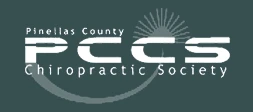Shoulder Pain: A Complete Guide for Residents of St Petersburg, Florida
Living with shoulder pain is tough. It can make it hard to dress, cook, drive, or even sleep. If you live in St Petersburg, Florida, and wake up with sore shoulders or feel pain that makes it hard to get comfortable enough to sleep, you know how frustrating it can be. Whether you’re experiencing discomfort spending Saturdays at Crescent Lake Park, trying to enjoy festivals in Grand Central District, or feeling a sharp ache while lifting groceries near Tyrone Square, shoulder pain relief is possible at St. Petersburg Spine and Joint Center.

What Causes Shoulder Pain?
Shoulder pain is common no matter where you live. This pain isn’t just inconvenient—it can stop you from enjoying the things you love. Let’s talk about what really causes shoulder pain, so you understand what’s happening inside your body.
- Referred Pain from the Heart
One cause people don’t always know about is heart problems. A heart attack doesn’t always start with crushing chest pain like you see in movies. Many people—especially women and older adults—get:
– Dull or aching pain in the left shoulder or arm.
– Pressure in the upper back or between the shoulder blades.
– Shortness of breath, sweating, nausea, or dizziness.
If you live with risk factors (like high blood pressure or diabetes), and you get new pain when walking, climbing stairs, or being active, call 911 or go to the ER, especially in a city like St Petersburg with quick access to hospitals. - Overuse Injuries
If you play sports in North Shore Park or work in local landscaping, your shoulder might hurt because you’re using it a lot. This is called an overuse injury. It can make small tears in the muscles and tendons, which leads to pain and weakness. Many people in St Petersburg, especially tennis players and swimmers, get overuse injuries from repeating the same motions. - Rotator Cuff Tears
The group of muscles and tendons that help lift and move your arm are called the rotator cuff. When these get hurt—from sports, chores, or just sleeping weird—it can make reaching overhead painful and hard. This problem is common at any age, but especially for folks over 40. - Arthritis
Arthritis is when the cartilage in your joints wears down over time. The shoulder is no different. For older residents, arthritis is a frequent source of shoulder pain. This kind of pain is usually slow to develop and gets worse with time. - Bursitis or Tendinitis
Your shoulder has small sacs of fluid called bursae that act like pillows between bones and tendons. If these get swollen, or if the tendons get irritated, you’ll feel pain and tenderness—maybe even swelling. - Dislocation or Fracture
A fall off your bike on the Pinellas Trail or slipping on wet tiles in your home can cause your shoulder to pop out of its socket or break a bone. This usually makes the pain very sharp and you may not be able to move your arm at all. - Frozen Shoulder (Adhesive Capsulitis)
A frozen shoulder makes your joint stiffen up and lose movement. This can follow a period of rest after an injury or even after a surgery where you don’t move your shoulder for a long time. It is more common for people with diabetes and those who have had prolonged shoulder immobilization. - Nerve Problems
Sometimes, the pain doesn’t even come from your shoulder—it comes from nerves in the neck or upper back. If nerves get pinched (for example, due to herniated discs), you might feel pain radiating into the shoulder—even tingling or numbness. - Shoulder Pain After Surgery
After certain surgeries—especially laparoscopic or minimally invasive procedures—many people feel a sharp or aching pain in their shoulder. Even though the operation happened in the abdomen or belly, the pain shows up near the shoulder. This kind of shoulder pain is a very common side effect after surgeries where gas is used to inflate the abdomen, which is called pneumoperitoneum.
When Should I Worry about Upper Back Pain Between Shoulder Blades?
Pain between the shoulder blades can feel scary because it’s not always easy to tell what’s causing it. Most of the time, it’s due to strained muscles—especially if you’ve been gardening, kayaking, or moving furniture in your home. But sometimes, it can be something more serious.
Red Flags: When to Get Help
- Sudden, severe pain: If pain comes on all at once and feels worse than normal, especially in your upper back and between your shoulders, get checked right away.
- Trouble breathing, chest pain, or sweating: Upper back pain combined with these signs could be a heart problem—even a heart attack.
- Weakness, numbness, or tingling: If your arms or legs feel weak or numb, or you lose control over your bladder or bowels, this could mean there’s big pressure on the spine or nerves. Go to the emergency room.
- Pain after trauma: Falls, car accidents, or even a rough basketball game at Campbell Park should not be ignored if you have back pain afterwards.
- Pain that lasts: If your pain stays strong for more than a week or keeps you up at night, it’s time to call a doctor.
Other Causes
- Gallbladder disease, peptic ulcers, or pancreas problems: These can all cause pain in this area.
- Lung issues, including cancer: Although rare, these can sometimes be the culprit.
It’s always okay to call a local clinic if you’re not sure. A health professional like your doctor can help you decide if your pain is normal or something bigger.
Is Shoulder Blade Pain a Sign of Cancer?
Cancer is one of the least common causes of shoulder pain, but people worry about it a lot. The good news is, most pain in the shoulders or between the blades is not from cancer.
When Might It Be Cancer?
- Bone cancer: Tumors in the bones near the shoulder blades are very unusual, but they do happen. You might notice the pain at night or a lump that’s getting bigger.
- Lung cancer: Sometimes, a type of cancer called a Pancoast tumor grows at the top of the lung and can press on nerves that cause pain between the shoulder blades, in the arm, or even the neck.
- Weight loss or feeling tired all the time: These are signs doctors watch for, especially if you don’t know why you’re feeling bad.
- Prior cancer history: If you’ve been treated for cancer in the past and now have new pain near your shoulder or back, call your doctor.
What to Do?
Don’t panic if your pain is new and you feel healthy otherwise. Cancer pain almost always comes with other signs that are hard to ignore. In St Petersburg, residents at higher risk—such as those with histories of lung problems or previous cancers—should let their primary care doctor know about any new, growing, or unexplained pain.

How to Relieve Shoulder Pain
There are many ways to help shoulder pain feel better. Some work better when pain is new. Some work best for long-term or stubborn pain. You might need to try a few before you find what helps you most.
First Steps (Home Remedies)
- Rest: Take a break from things that hurt your shoulder. It might mean skipping a yoga class or asking family for help with yard chores near Crescent Heights.
- Ice and heat: Ice for the first 48 hours helps lower swelling. After that, gentle heat eases muscle tightness.
- Medicine: Over-the-counter pain relievers like acetaminophen or ibuprofen can really help.
- Change your habits: Sit up straight, avoid slumping, and keep the shoulder relaxed. Stop carrying heavy bags just on one side.
- Gentle stretching: Even if it hurts a little, moving the shoulder slowly can stop it getting too stiff.
- Support while sleeping: Sleep on your back with a small pillow under the affected arm, or on your side with a pillow between your arms.
When to Call a Doctor
If your pain is strong, lasts longer than a week, or you can’t do things you used to, make an appointment with a provider. Primary care clinics and urgent cares are spread all throughout St Pete—look for one with good reviews near you.
Shoulder Pain Treatment
Shoulder pain can come and go. Some people only need a little rest, but others need more help. Treatment depends on what’s causing your pain.
KT Tape for Shoulder Pain
KT Tape is a special tape that stretches and sticks to your skin, giving light support. It’s used by athletes, weekend walkers, and even folks recovering from surgery.
Benefits of KT Tape:
- Can help reduce pain and swelling.
- May remind you to keep your shoulder moving the right way.
- Gives some support without making your shoulder stiff.
How to Use It:
- Clean and dry your skin first.
- Cut the tape to the right length.
- Most people need a bit of help putting it on in the right spot the first time. There are many videos online, but your local physical therapist can give you the safest and best advice.
KT Tape can help right after an injury, during gentle exercise, or even after surgery to calm swelling and remind you not to overdo it.
Stretches for Shoulder Pain
Stretching is a gentle way to keep the shoulder joints moving smoothly. In St Petersburg, clinics near neighborhoods like Crescent Heights or Pinellas Point often show people these easy stretches.
Simple Stretches to Try:
- Shoulder Rolls: Shrug your shoulders up, then roll them back and down. Repeat 10 times.
- Cross-Body Arm Stretch: Bring one arm across your chest, holding with your other hand for support. Hold for 20-30 seconds.
- Pendulum Stretch: Lean over a table, dangle your sore arm, and swing it gently in circles.
- Towel Stretch: Hold a towel behind your back, one hand above, one below. Pull gently.
- Passive Internal Rotation: Use a stick or cane—gently push your hand behind your back.
- Sleeper Stretch: Lie on your side and gently push your forearm down, feeling a stretch behind your shoulder.
Always stretch until you feel a gentle pull, not pain. You can do these stretches at home or at local parks with a friend. Stop if your shoulder hurts sharply or the pain gets worse.
Exercises for Shoulder Pain
Shoulder Strengthening Exercises:
- Scapular Squeezes: Sit or stand up straight. Squeeze your shoulder blades together and hold for 5 seconds. Repeat 10 times.
- Wall Push-Ups: Stand a few feet from a wall, place hands on the wall and do gentle push-ups.
- Resistance Band Pulls: Use a light band, keep elbow at your side, and pull your hand outwards, slowly returning.
- External and Internal Rotations: With your elbow tucked to your side, rotate your forearm out or in—use light resistance, like a can of beans or a small band.
- Isometric Exercises: Push your hand gently against a wall in all directions without moving your arm. Hold for 5 seconds.
- Side-lying Rotations: Lie on your side and rotate your upper arm up, using a light weight.
If you feel sudden pain that doesn’t go away, or your arm feels weak, stop the exercise and call your doctor. Many clinics have therapists who will watch your form and adapt the move if needed.
Traditional Shoulder Pain Treatments
If gentle treatments aren’t helping, or your pain comes from a more serious injury, you may need extra help:
- Physical Therapy: An expert guides you through stretches and exercises, helping you regain motion safely. This is very common in St Petersburg, with therapists working out of hospitals, private clinics, and even some gyms.
- Prescription Medicine: Your doctor can give you medicine to calm nerve pain or reduce swelling if over-the-counter stuff isn’t enough.
- Steroid Injections: Shots in the shoulder joint can lower swelling and help pain, especially with bursitis or tendinitis.
- Massage and Trigger Point Release: Soft-tissue massage by licensed therapists can help with muscle tightness after sports or surgeries. Always go to a licensed provider.0
- Alternative Methods: Acupuncture, acupressure, and even chiropractic care can sometimes relieve stubborn pain.
If you had surgery, a physical therapist in the area will likely help you get your movement back with a custom plan just for your type of operation.
Surgical Options
Most shoulder pain goes away with rest and therapy, but sometimes surgery is the best or only choice, especially if:
- There’s a full tear in a rotator cuff or labrum.
- A bone is broken or severely damaged.
- There’s severe arthritis making daily activities impossible.
Types of Surgery
- Arthroscopy: A small camera and tiny tools are used to fix damage. This can help with many injuries and leaves only small scars.
- Open Surgery: Larger incisions are sometimes needed for big repairs.
- Shoulder Replacement: For really bad arthritis, doctors replace damaged bones with artificial parts.
Recovery from surgery can take weeks to months. You’ll work closely with therapists around St Pete to get your motion and strength back. Pain after surgery is normal, but should slowly get better, not worse.
Advanced Alternative Approaches to Shoulder Pain Treatment in St. Petersburg, Florida

St. Petersburg Spine and Joint Center provides options to help patients avoid surgery or reduce their dependence on medication. We offer two promising alternative treatments that have shown remarkable results: Shockwave Therapy (ESWT) and MLS Robotic Laser Therapy.
Shockwave Therapy (ESWT)
Shockwave therapy, or extracorporeal shockwave therapy (ESWT), is a non-invasive medical treatment that employs high-energy sound waves to encourage healing and alleviate pain in different musculoskeletal illnesses. Throughout the treatment, a specialized equipment administers regulated shockwaves to the affected region of the body. These shockwaves traverse through the skin and underlying tissues, creating a mechanical force that boosts tissue regeneration, enhances blood circulation, and reduces inflammation.
MLS Robotic Laser Therapy
MLS Robotic Laser Therapy is a non-invasive treatment that utilizes low-level laser energy to stimulate tissue repair and reduce inflammation. By targeting the affected area, this therapy reduces pain and promotes healing. Unlike surgical procedures, cold laser therapy requires no incisions, anesthesia, or downtime.
How to Get Started on the Road to Recovery
Consultation with Our Expert Team: Schedule a consultation with our experienced healthcare professionals to determine if you qualify as a candidate for these treatments. We will review your symptoms, medical history, and diagnostic imaging to provide personalized recommendations. Not all individuals with shoulder pain are candidates for our treatments, so it is important to schedule a consultation with our team to assess your unique situation.







